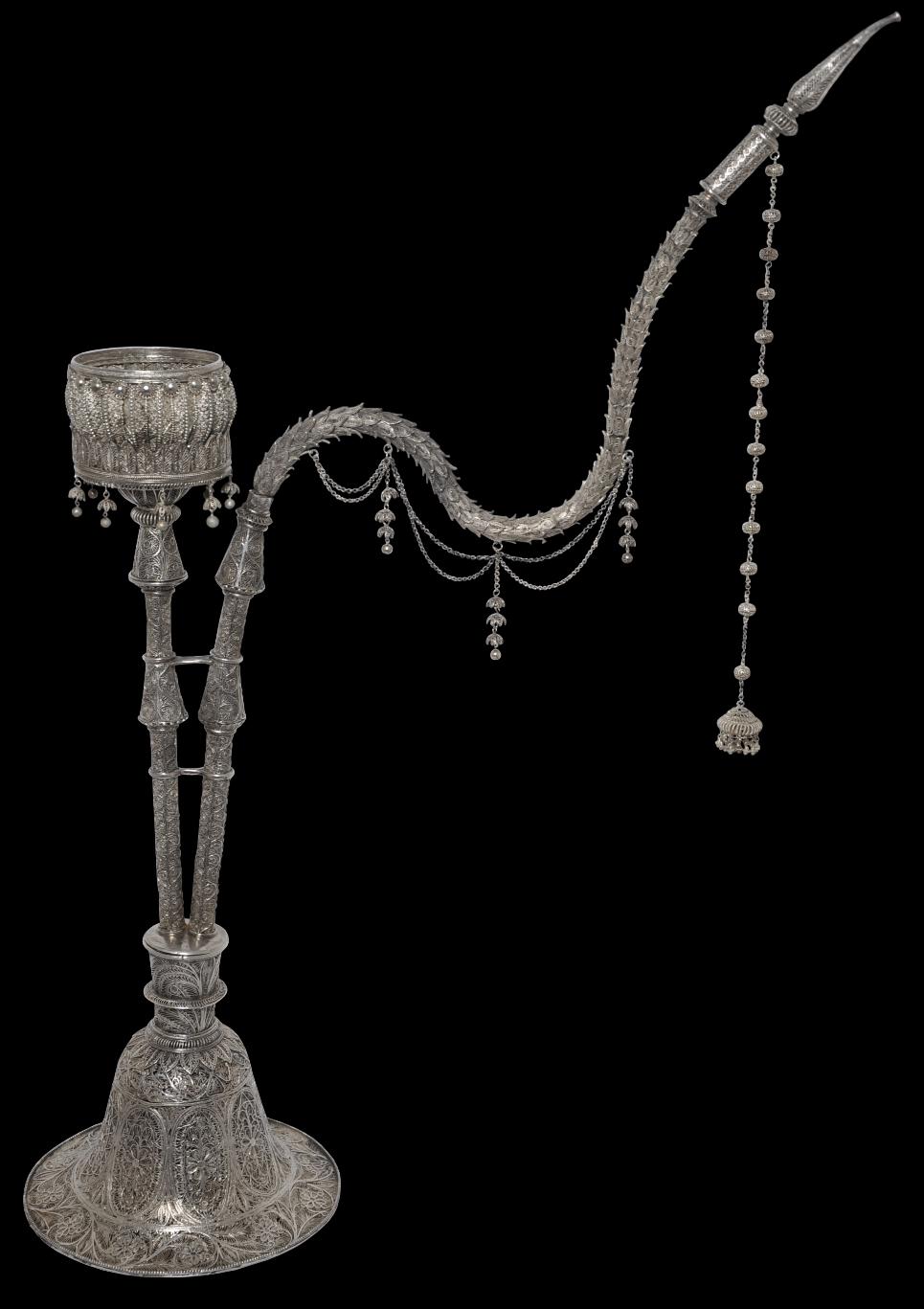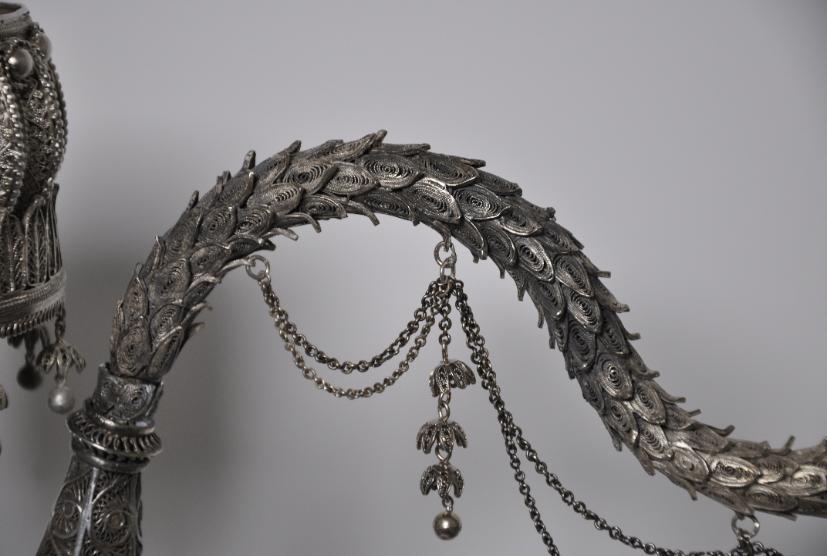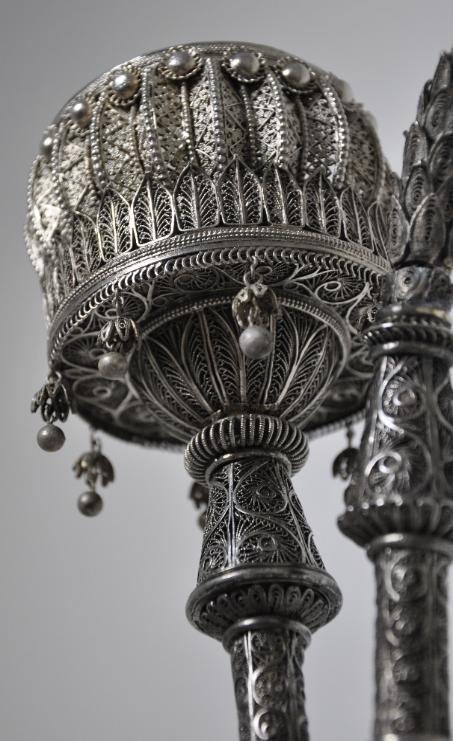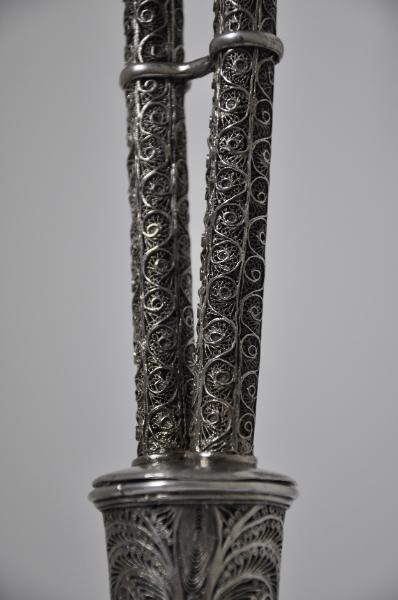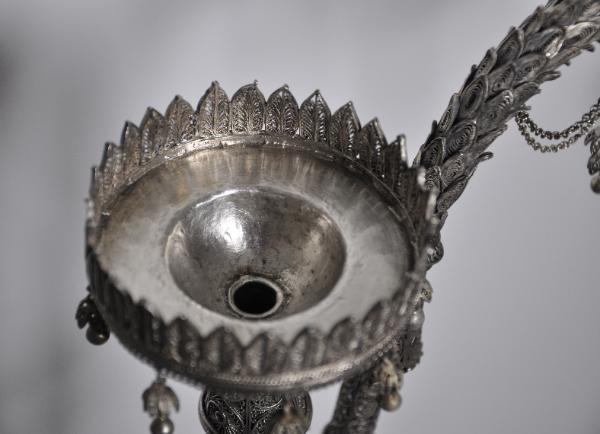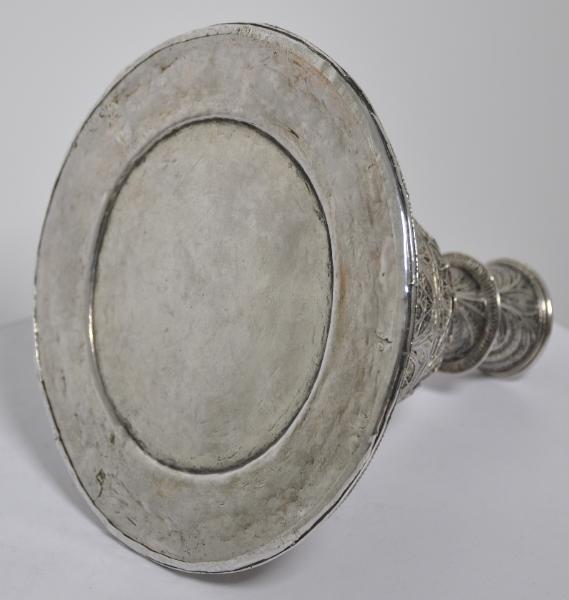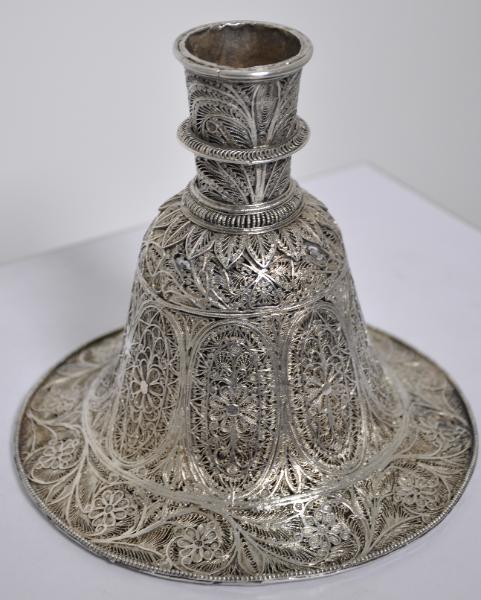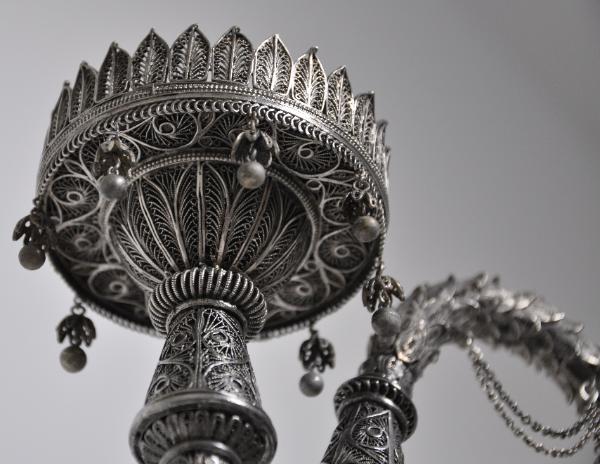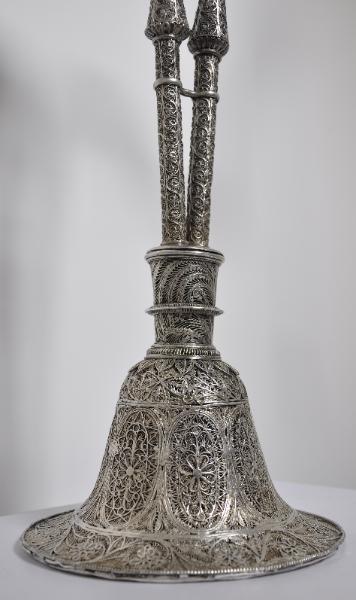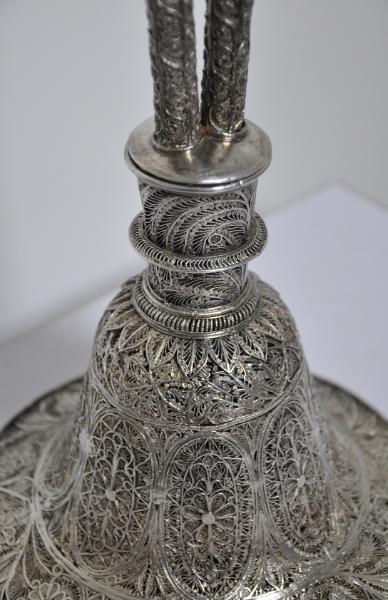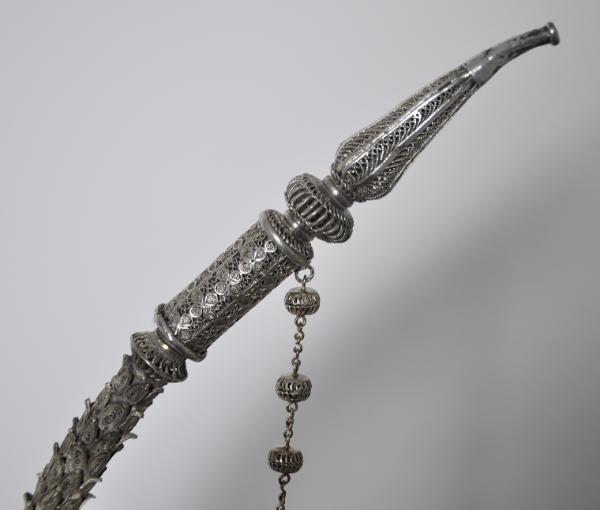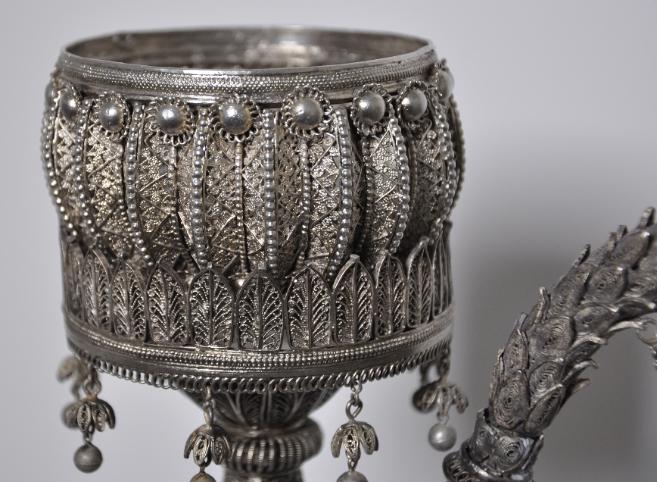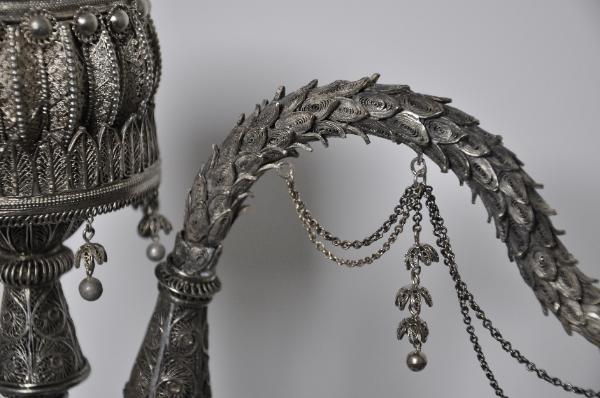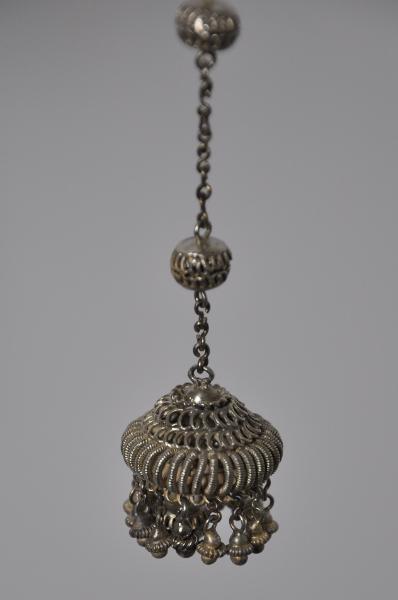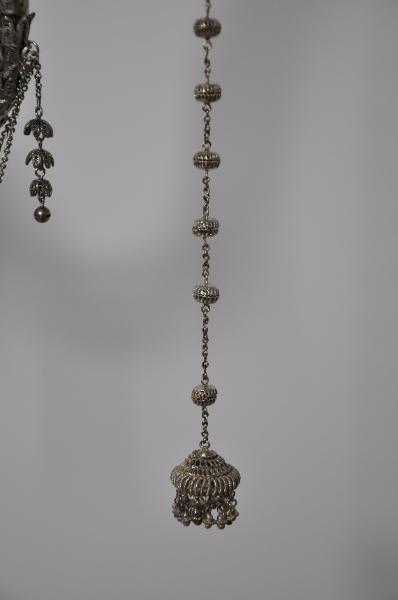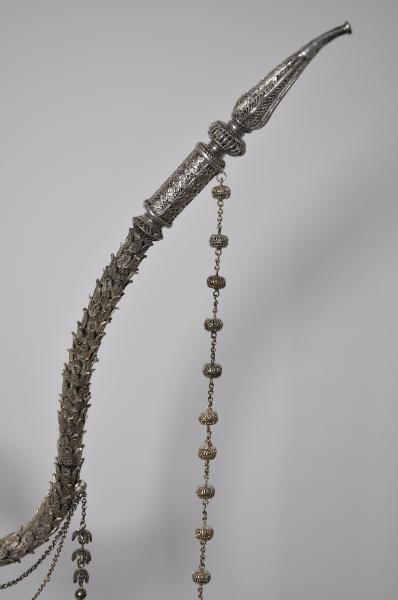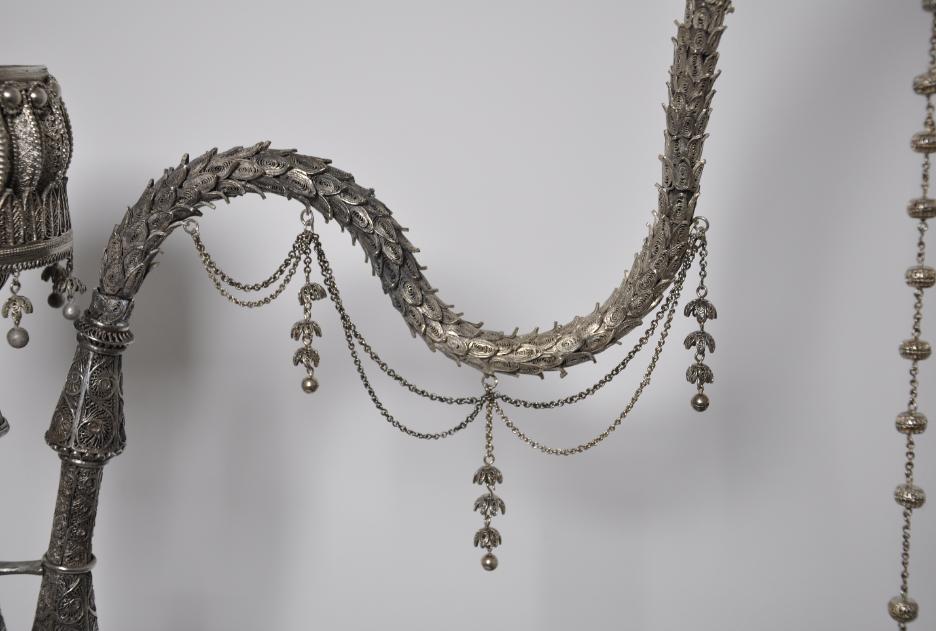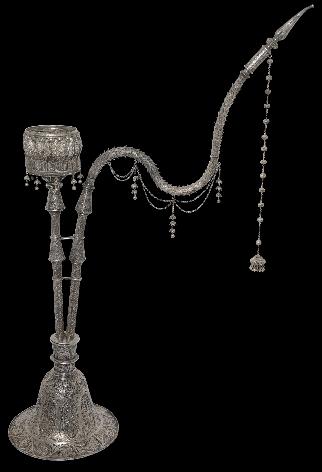
Indian Silver Filigree Hookah Set
Rare, Large Filigree Silver Hookah Set
Deccan or Orissa, India
18th or early 19th century
height: 65.5cm, weight: 1,852g
Complete antique hookah sets are rare. Complete sets in silver filigree are all the more rarer. This extraordinary and fine example comprises a bell-shaped base, twin stems, charcoal bowl and screen, hose pipe and mouthpiece as well as additional pendant decorations, all in silver filigree. The filigree itself is arrayed in Islamic-inspired floral and geometric motifs.
The charcoal bowl cover is in the form of a swollen opium poppy pod with its squat, spherical form and ribbed sides. This is perhaps a reference for the intended use of the hookah in that tobacco might have been mixed with opium when being smoked.
The base has an inner liner of solid beaten sheet silver which served as the receptacle for the water, this being obscured by the other ‘skin’ of silver filigree work.
Every piece has been undertaken in the finest filigree work – even the underside of the charcoal bowl, which is itself a splendid example of Indian silver filigree. The ‘S’-shaped hose pipe is remarkable too being covered in bands of filigree petals along its entirety, and arrayed in such a manner as to denote the flow of vapour.
The charcoal bowl, hose pipe and mouth piece are further embellished by pendant filigree ‘blossoms’ suspended on silver chains. It is remarkable that these alone have survived intact.
Silver filigree of this type is associated with several places in India. Karimnagar in the Deccan in central India and Cuttack in Orissa were two important centres for the manufacture of silver filigree. Wealthy Muslim clients often had ordered costly silver filigree items to be presented as wedding gifts. Betel trays (
pandans), rosewater sprinklers and caskets are the usual forms of Indian filigree silver. This is the first time we have encountered a full hookah set. No similar set seems to have been published.
Elements of filigree work are similar to that on items hitherto associated with Indo-Portuguese filigree and given a much earlier dating. The silver spirals or curls on the stems for example are similar to work on a gilded silver filigree casket and base illustrated in Jordan (1996, p. 219) which is attributed to the late seventeenth century.
The purity of the silver used in the hookah here is very high, higher than sterling standard and possibly pure. The set is in excellent condition; there are relatively few losses to the filigree. The set fully dismantles into six separate pieces, all of which fit together well and tightly.
References
Balagouni Krishna Goud & MV Subrahmenyeswara Sarma, ‘Karimnagar filigree art works in the Salar Jung Museum,’ Indian Journal of Traditional Knowledge, October 2005.
Jordan, A.
et al, The Heritage of Rauluchantim, Museu de Sao Roque, 1996.
Terlinden, C.,
Mughal Silver Magnificence, Antalga, 1987.
Provenance
UK art market
Inventory no.: 2122
SOLD

